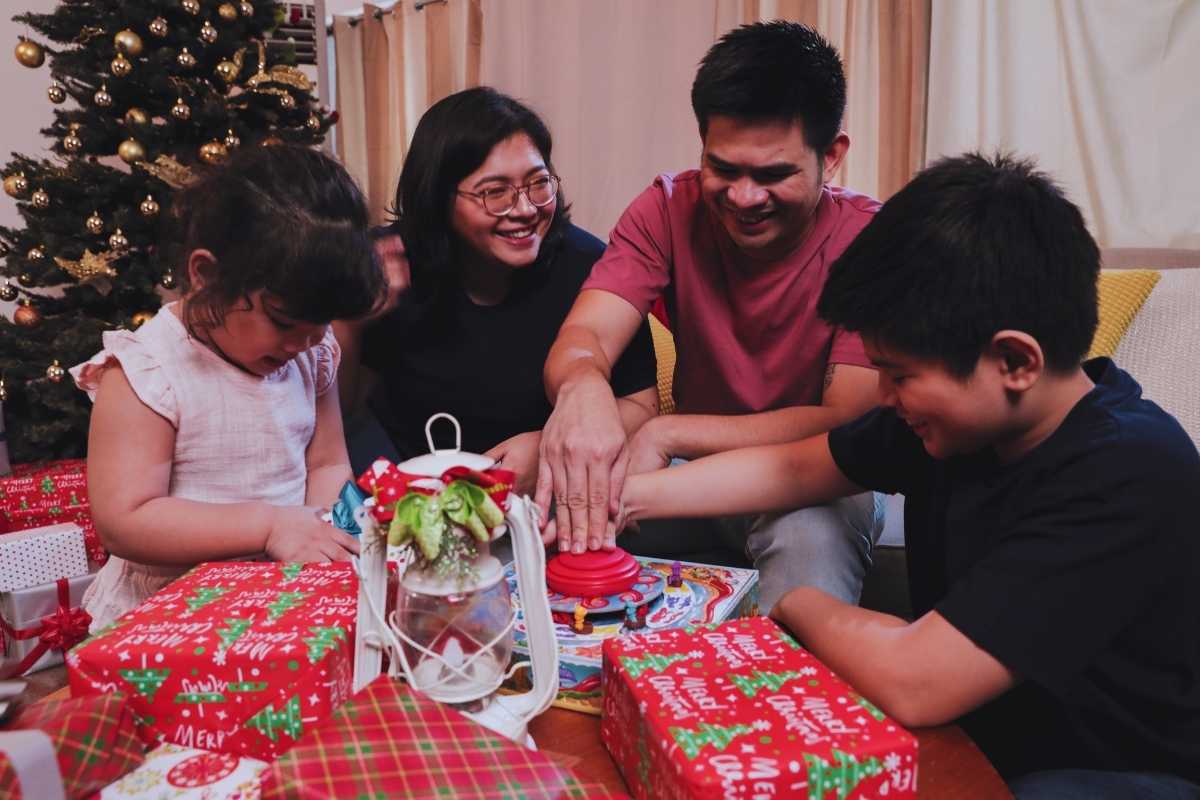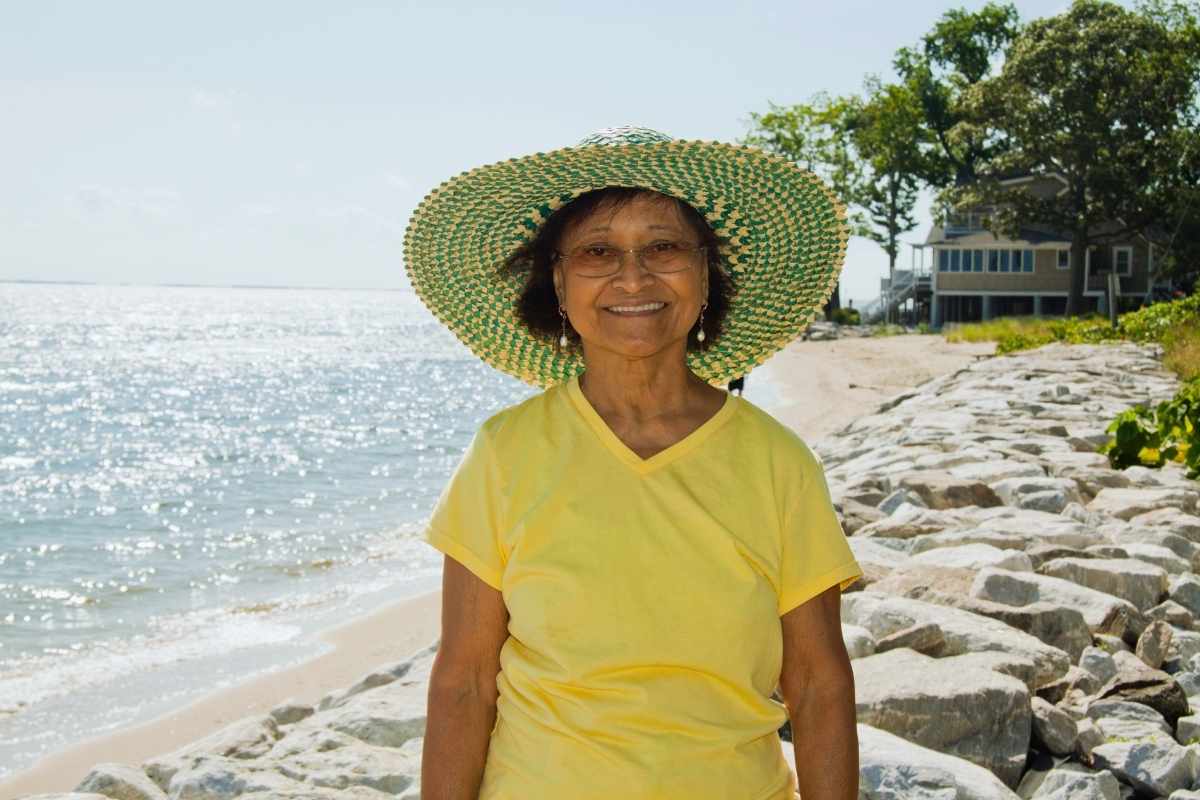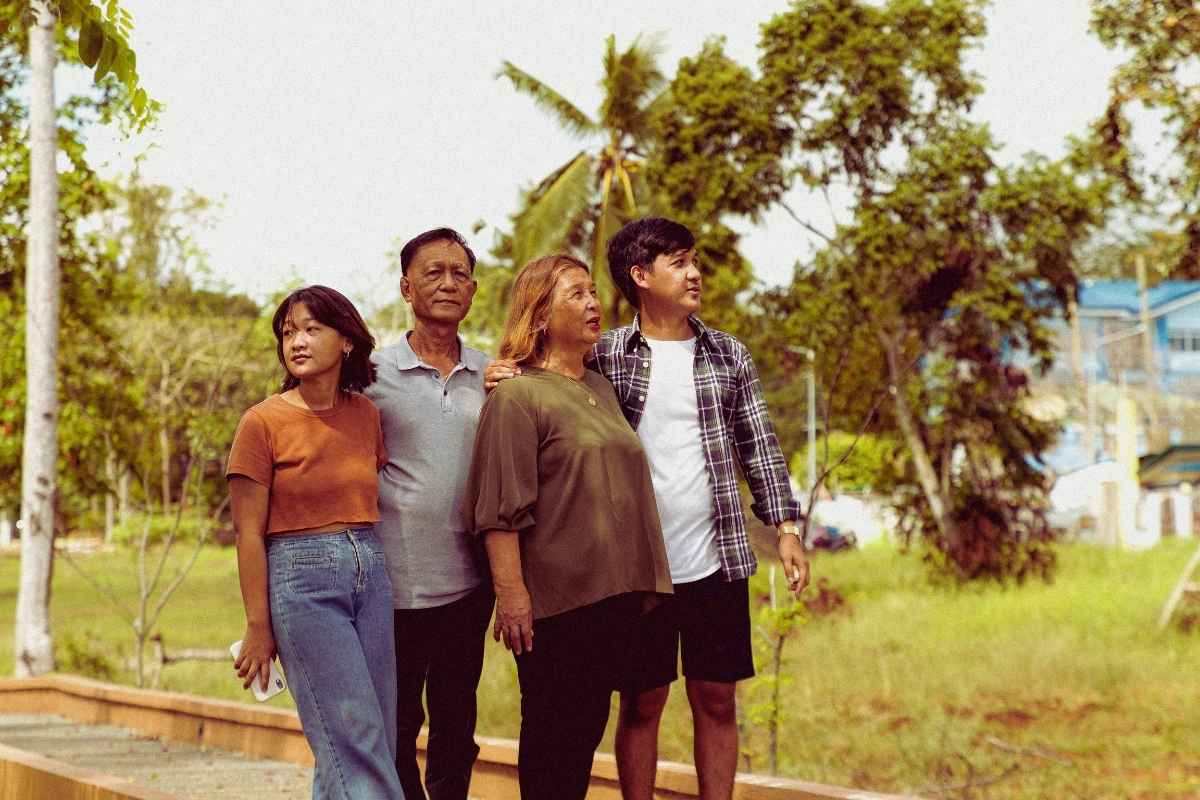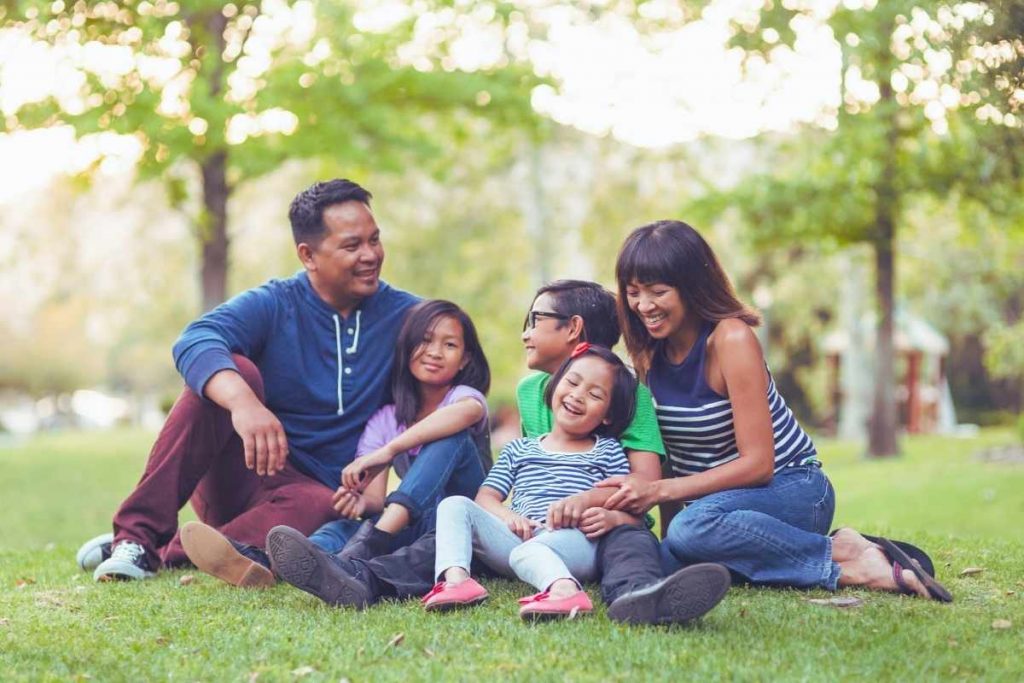By 2030 (in just 5 years), the Philippines will begin its transition to an aging society. Growth in the population 65 and over will accelerate faster than other segments. It’s still to early to call the sliver tsunami. However, it’s important to begin preparing for this demographic shift. Retirement planning is an essential exercise that should never be overlooked—especially in the Philippines, where evolving economic conditions and unique cultural factors play a significant role. It’s estimated that 90% of Filipinos are concerned about thier retirement. Additionally, the mortality protection gap in the Philippines is fast approaching P50 trillion. Amid today’s rapidly changing landscape, Filipinos must understand the complexities involved in preparing for a secure and comfortable retirement.
In this blog post, our team of financial and business experts from KaubanCare explores the importance of preparing for retirement in the Philippines. We discuss the challenges many Filipinos encounter, examining the impact of longer life expectancies and critical illnesses. Finally, we outline the main financial options available to help future retirees achieve their desired standard of living. Be sure to follow us on Facebook. Let’s jump into it.
The Importance of Retirement Planning for Filipinos
Retirement planning is more than just stashing money away in a bank account. It involves setting realistic goals, creating a strategy to reach those goals, and consistently reviewing and adjusting that strategy in response to changing personal circumstances or market conditions. Here are some reasons why retirement planning should be prioritized:
Supporting Extended Family: In the Philippines, it is common for retirees to play a supporting role for younger members of the family, whether through assisting with grandchildren or sharing living expenses. Adequate planning helps to ensure that you can provide support while still preserving your own financial well-being.
Ensuring Financial Security: One of the most straightforward reasons for retirement planning is the need for financial security in old age. Without a steady paycheck, one’s savings and investments effectively become the main source of income and ability to meet any unexpected needs.
Covering Healthcare Costs: As we age, medical costs can rise dramatically, as can the risk of diseases. For example, the average cost of cancer treatment alone ranges from P120,000 to 1.2 million annually. Investing early in healthcare coverage or insurance plans becomes crucial to managing these expenses comfortably.
Maintaining Lifestyle: Retirement is not just about survival; it’s about living comfortably and enjoying the fruits of decades of work. With proper planning, retirees can maintain—or even elevate—their desired lifestyle.
The number of Filipinos adults with wealth of at roughly 15 million will reach 5 million by 2030 up from 1.6 million in 2021. This number will rise to 8.1 million by 2035.
For many Filipinos, the challenge lies not in recognizing the importance of retirement planning but in making timely and efficient preparations. Culturally, there is a prevailing assumption that adult children will step in to help support their parents during old age. However, this mindset is changing as more Filipinos are becoming less reliant on children to care for them post-retirement. While family-centric traditions are admirable, they can inadvertently lead to less proactive financial planning in one’s working years.

Challenges Filipinos Face in Retirement Planning
When planning for retirement, its essential to take into consideration factors including economic, social, and cultural factors. Below are some of the key challenges faced by Filipinos as they plan for retirement:
Poor Financial Literacy
Financial literacy in the Philippines has improved over the years, but it still lags behind that of more developed nations. Many Filipinos lack a strong understanding of investment instruments, saving strategies, or the implications of inflation on their future purchasing power. This lack of knowledge often leads to a reliance on basic savings accounts—if any savings at all—instead of exploring more robust financial products like mutual funds, unit investment trust funds (UITFs), and retirement-specific insurance.
Fact: Only 2% of Filipinos were able to answer all 6 questions on basic financial literacy conducted by the Bangko Sentral ng Pilipinas
Limited Social Security Benefits
The Social Security System (SSS), the main government-run pension program in the Philippines, provides basic coverage for retirees, but the monthly pension amount is often insufficient to fully sustain a comfortable retirement lifestyle. The payouts are calculated based on years of contributions and average monthly salary credits, but because many Filipinos work in informal sectors or are underemployed, their contributions are minimal. Consequently, the pension they receive might be barely enough to cover everyday expenses and healthcare costs.
Fact: Starting in January 2025, the contribution has been increased by 1% bringing the total contribution to 15%.
Cultural Expectations: Utang na Loob
Filial piety in Filipino culture places a high value on family unity and intergenerational support. The concept of Utaang na Loob creates an internal moral obligation on children to care for their parents and elders during retirement. Although this cultural strength can be a blessing, it can also foster an over-reliance on adult children for financial support. Some workers delay or ignore personal retirement planning because they assume their children will help. This assumption can backfire, especially given the increasing cost of living and the likelihood that children may also need to focus on their own financial obligations. It appears that these trends are changing. Nevertheless, this cultural expectation has created a wave of unpaid caregivers with an estimated value of work at 10-39% of Philippine GDP.
Fact: Over 58% of Filipinos in a recent survey no longer believe that children should be viewed as an alternative to retirement pension
Inflation and Rising Costs
The cost of living in the Philippines continues to rise—particularly in major cities like Metro Manila and Cebu. Housing, food, utilities, and healthcare are all growing more expensive, making it critical to factor inflation into any retirement calculation. Without adjusting contributions or investments for inflation, retirees may find that what once seemed like a substantial nest egg diminishes in purchasing power over time.
Fact: Healthcare benefit inflation was expected to approach 14% in 2024 well above the 9.9% average for Asia Pacific.
Lack of Long-Term Employment Stability
Another major hurdle is the precariousness of long-term employment for some sectors. Contractual work, project-based engagements, and entrepreneurship can sometimes lead to irregular or unpredictable income streams. In certain organizations, the rate can exceed 50% with workers in this status for more than a decade. This situation often complicates consistent contributions to retirement funds or insurance policies.
Fact: Between 27-45% of the Philippine workforce is classified as contractal or non-regular.

Average Life Expectancy in the Philippines
One of the most critical data points in retirement planning is life expectancy. According to recent statistics, the average life expectancy in the Philippines stood at 69.9 years in 2024. Historically, life expectancy for women (73 years) typically exceeded that of men (67 years). Life expectancy fell in the Philippines and many other countries during the recent COVID-19 pandemic. However, averages will continue to rise due to improved healthcare, better nutrition, and enhanced access to medical facilities in many regions of the country.
Implications of an Increasing Lifespan
An increase in the average life expectancy means that retirees will need to plan for a longer retirement period. In the Philippines, the optional retirement age is 60 with the mandatory retirement age is 65. If you retire at 60, for instance, you could be looking at 15 to 25 more years without a regular paycheck and minimal income. This extended period underscores the need for robust financial planning and diversified income streams. In addition, as people age, the likelihood of requiring greater healthcare services grows—reinforcing the importance of healthcare coverage and emergency funds.
Addressing Longevity Risk
Longevity risk is the risk that you could outlive your retirement savings. Given the uncertainties in medical costs, economic conditions, and personal life circumstances, a longer-than-expected life can quickly erode even a well-planned retirement fund. Part of addressing longevity risk involves planning beyond one’s expected lifespan—aiming for a buffer that can accommodate unforeseen events or expenses.
The average cost of cancer treatment in the Philippines ranges from P120,000 to P1.2 million per year with at least 7 in 10 patients abandoning treatment due to financial limitations.
Critical Illness Risks and Their Impact
In the Philippines, healthcare is a pressing concern, and the probability of developing critical illnesses (such as cancer, heart disease, or kidney failure) increases with age. These and other lifestyle diseases continue to increase as economic growth begins to accelerate. Although the national government aims to strengthen PhilHealth coverage, the reality is that severe health conditions can drain retirement funds rapidly if additional coverage isn’t in place.
High Medical Costs
The cost of treatment for critical illnesses can vary greatly, but they generally amount to hundreds of thousands or even millions of pesos. This financial burden can completely derail a retirement plan, especially if it requires expensive procedures, long-term hospital stays, or specialized treatments not fully covered by PhilHealth or private insurance. In the Philippines, the cost of stroke care (medical fees, therapies, and other expenses) can start to P3,000 per session rising to six figures.
Importance of Health and Critical Illness Insurance
Death is the end of all expenses. However, living with a critical illness such as cancer or stroke can be financially debilitating. Health insurance and critical illness plans can significantly mitigate the impact of severe health conditions on one’s finances. Some insurance products offer lump-sum benefits upon diagnosis, making it easier to cover medical expenses without depleting retirement savings. The key is to enroll early and ensure the policy terms align with both your budget and health risks.
Emotional and Family Support
Critical illnesses don’t just take a financial toll; they also affect emotional well-being. Family members might shoulder greater care responsibilities, and retirees might feel guilty about being a financial burden. Having a plan that addresses these possibilities—from contingency savings to caregiving discussions—can reduce stress and help families focus on care rather than money problems.

Financial Options Available for Filipinos
Several financial vehicles and strategies exist to help Filipinos build a reliable retirement plan. While each has its strengths and weaknesses, combining multiple products can provide the diversification and security needed in retirement.
Social Security System (SSS) and Government Service Insurance System (GSIS)
SSS (Private Sector): For employed and self-employed individuals in the private sector, SSS contributions are mandatory and typically shared between employer and employee. The monthly pension amount depends on the number of credited years and average monthly salary credit. Although the basic pension is often modest, it still serves as a foundational income source.
GSIS (Public Sector): Government employees contribute to GSIS, which offers a more comprehensive range of benefits compared to SSS, including a loan program, survivorship benefits, and disability pensions.
Personal Savings and Deposit Accounts
Basic Savings Accounts: A simple deposit account is the most accessible and straightforward option for most people. While this provides liquidity, the low interest rates are unlikely to keep pace with inflation, making them a less ideal long-term investment.
More than 60% of Filipinos surveyd said they would pay for medical expenses from savings or borrow money from friends and relatives when needed.
Time Deposits: Banks also offer time deposits with slightly higher interest rates than basic savings accounts, locking in your money for a specified period. These are safe investments but might still yield modest returns relative to long-term inflation.
Personal Equity and Retirement Account (PERA): PERA is a voluntary retirement saving program that supplements the existing retirement benefits from Social Security System, Government Service Insurance System and private employer sponsored retirement plans. The maximum annual contribution is P200,000 for local workers and P400,000 for OFWs. PERA offers several tax advantages including tax free earnings from investment, up to 5% tax credit on contributions, tax free distributions and estate tax exemption.
Investment Funds (UITFs, Mutual Funds, and Stock Investments)
Unit Investment Trust Funds (UITFs): Managed by banks and independent managers, UITFs pool money from different investors and invest them in a variety of instruments such as bonds, stocks, or a mix of both. They offer diversification and professional management, though returns can vary based on market performance.
Mutual Funds: Similar to UITFs, mutual funds are managed by investment companies. Different mutual funds cater to different risk appetites, from conservative bond funds to high-growth equity funds. Be sure to consult your financial advisor for more information.
Stock Market Investments: Directly investing in the stock market can yield significant returns over time, but it also comes with higher risks. For those nearing retirement, a less volatile portfolio may be more prudent.
Private Pension and Retirement Plans
Some insurance companies in the Philippines offer pension-type plans where a portion of premiums goes into an investment component. After a set number of years, these plans provide a regular payout or a lump sum. Certain private employers offer plans including defined benefit plan, defined contribution plans or a combination of both. However, these plans may require certain employment classification. Combining such plans with other investments can boost retirement income.
Insurance and Health Products
Traditional Life Insurance: Protects your family’s finances by paying out a death benefit to your beneficiaries. Some forms of life insurance (like Variable Universal Life, or VUL) include an investment element that can potentially fund retirement.
Critical Illness Insurance: Specifically covers life-threatening health conditions such as cancer, heart disease, or stroke. Early enrollment typically means lower premiums and broader coverage. Programs such as PRUHealth Prime from Pru Life UK is an investment-linked life and health insurance plan designed to help ease the financial burden of having cancer. It offers payout on diagnoses as well as the ability to expand coverage to up to 52 illnesses. To learn more about these and other programs you can contact your financial advisor.
Long-Term Care Plans: In the Philippines there are no providers offering specific plans for in-home care, assisted living, or nursing facilities later in life. Solutions are typically built in to plans that offer lump sum payments for various conditions such as Alzheimer’s, Parkinsons, etc. There are also payputs offered if individuals are unable to complete certain ADLs or self-care tasks.

Entrepreneurship and Passive Income
For Filipinos with an entrepreneurial spirit, building or investing in a business can become a source of passive income in retirement. However, this option comes with risks—entrepreneurs should diversify and maintain contingency funds for emergencies. Additionally, with the rise of digital platforms, retirees can explore online businesses that may require less overhead or capital. Several business ideas are possible including restaurants, online, tutors, etc. However, planning is essential before embarking on the entrepreneurial journey post-retirement.
Property Investments
Real estate remains a popular option for many Filipinos. Owning a property—whether a condominium unit, house, or commercial space—can generate rental income and potentially appreciate in value over time. However, investing in real estate involves maintenance costs, property taxes, and possible vacancies, so it’s essential to plan accordingly. Additionally, the recent passage of Republic Act 12001, also known as the Real Property Valuation and Assessment Reform Act (RPVARA) will have consequences on taxation so consult with your financial or tax advisor.
Crafting a Holistic Retirement Plan
Choosing one or two financial products isn’t always enough. A holistic approach to retirement planning involves assessing your current financial situation, setting clear retirement goals, and selecting a mix of investment and insurance products that align with your time horizon, risk tolerance, and expected retirement age. Below are some steps to guide you:
- Evaluate Your Current Finances: Understand your monthly cash flow, outstanding debts, and existing assets. This evaluation serves as your starting point, clarifying how much you can save or invest.
- Set Retirement Goals: Envision what kind of lifestyle you want in retirement. Do you plan to travel? Support your grandchildren’s education? Own a second property? Quantifying these aspirations will help determine how much money you need.
- Assess Risk Tolerance: Younger individuals may afford to invest more aggressively in equities for higher potential returns, while those close to retirement may prefer more conservative products.
- Diversify Your Portfolio: Don’t rely on just one type of asset class e.g. property. Spread your investments across different asset classes—stocks, bonds, real estate, and insurance—to mitigate the risk of market fluctuations.
- Review and Adjust Regularly: Life circumstances change. Revisit your plan every year or whenever significant events occur—like a job change, marriage, or illness—to ensure your strategy remains aligned with your goals.
Overcoming Behavioral and Cultural Barriers
For many Filipinos, the biggest hurdle is often the mindset. With a relatively young population, the concept of old age can feel distant, leading some to postpone saving or investing. Others believe the small amounts they can set aside are inconsequential. However, the society is aging and overcoming these barriers involves:
- Starting Early (No Matter How Small): Compound interest can significantly boost even modest contributions over time.
- Increasing Financial Literacy: Leverage free resources, seminars, online courses, and financial advisors who can guide you toward better financial decisions.
- Involving Family: Retirement planning should be an open discussion with your spouse and children. Encouraging everyone to be financially prepared reduces the likelihood of over-reliance on a single family member. This is particularly important when addressing intergenerational wealth transfer.
- Seeking Professional Advice: Financial advisors and insurance specialists can tailor recommendations to your unique situation, helping you navigate complex products or tax implications.
Roughly 90% of Filipinios are worried that retirement will be challeneging with nothing in thier pocket, with poor health and no one to look after them.
Preparation is Essential for a Worry-Free Retirement
Finally, preparing for retirement in the Philippines requires careful thought, discipline, and an informed approach to financial planning. With an average life expectancy that continues to rise, Filipinos must anticipate spending more years in retirement—years that will require stable funding and higher costs. Critical illness risks further underscore the need for comprehensive strategies that include both investment vehicles and insurance coverage.
Despite the challenges—low financial literacy, limited social security benefits, cultural expectations, and rising costs—Filipinos have a variety of financial tools at their disposal. From government-run pension systems like SSS and GSIS to private insurance, mutual funds, and real estate investments, there is no shortage of ways to build a strong retirement foundation. What’s essential is adopting a holistic approach: set clear objectives, diversify your investments, and regularly revisit your plan to adapt to life’s inevitable changes.
Ultimately, retirement is about enjoying the freedoms and comforts that come after decades of hard work. By starting early, staying informed, and seeking professional guidance when needed will give you an edge. These steps will allow Filipinos to better position themselves for a future defined by security, independence, and peace of mind.
To discuss retirement options and financial products be sure to get in touch with us.
